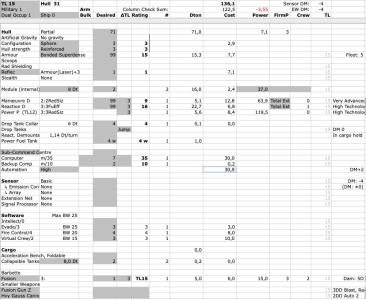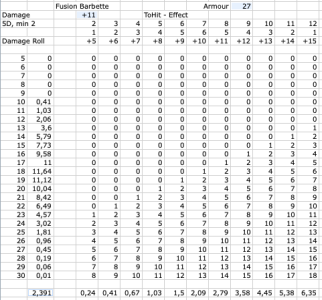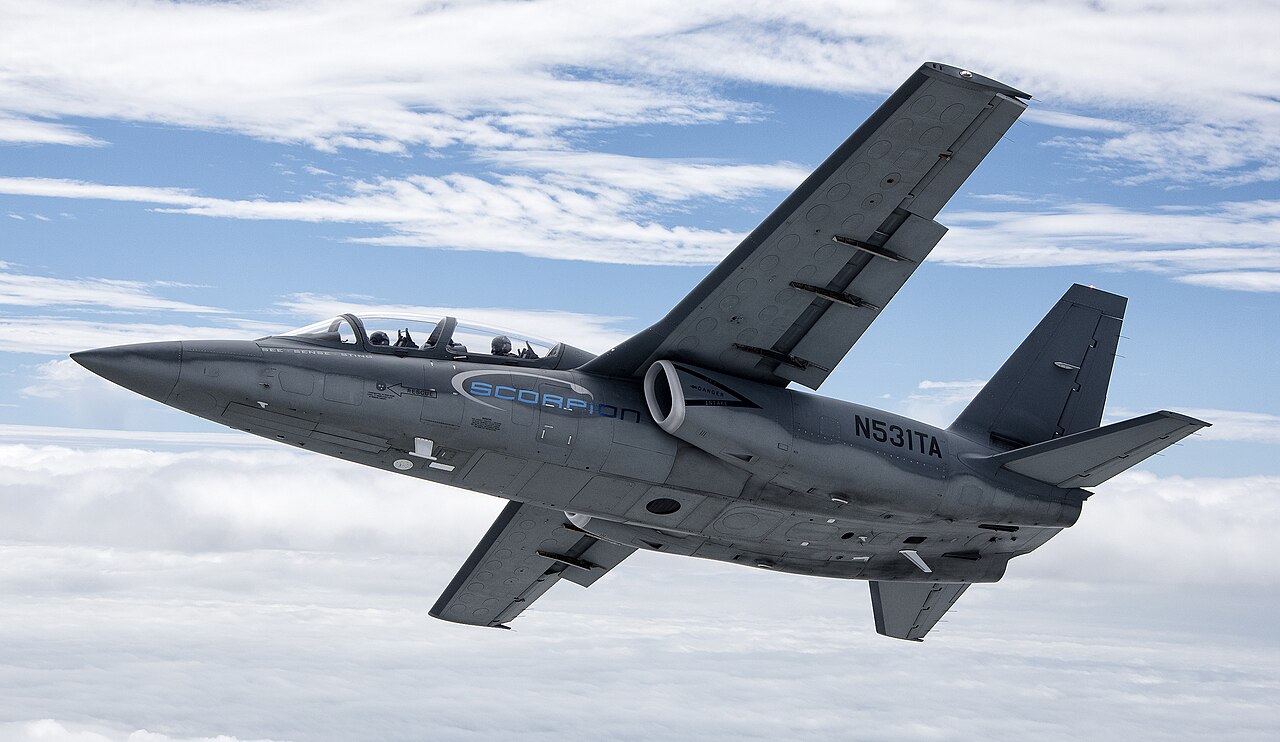AnotherDilbert
Emperor Mongoose
OK, HG'22 nerfs fighters...
So, what can we do?
To have a chance to scratch a warship we need a barbette, so 70 Dt.
To get into range we need a reaction drive, so no people.
This gets us something like this:
71 Dt, Armour 15, 9 G + 16 G, barbette, max computer and automation, no squishy crew.
A few modules for reaction fuel, sensors, sub-command centre, and perhaps a few Fusion Z guns (smaller weapons).
Quite expensive at MCr 120.

With a Fusion Barbette enhanced with Long Range and High Yield we can reach to Close range and do a little bit more damage.
Stacking every DM available to us, the idea is to get enough Effect to be able to penetrate even heavy armour.
Reaching dogfighting range a typical attack task is:
Against armour 30, it would do average ~7 damage with damage scale.
Against armour 15, it would do average ~49 damage.
Against ships smaller than 2000 Dt, it will crit 97% of the time.

Average damage 2.4 × scale 3 = 7.2.
With a particle barbette (Intense Focus) we would be down to average 1 damage, but be immune to dampers.
200 heavy fighters would incinerate a battleship in 60 dogfight rounds ≈ 1 space combat round.
A single heavy fighter would incinerate a destroyer in less than 60 dogfight rounds ≈ 1 space combat round.
So, what can we do?
To have a chance to scratch a warship we need a barbette, so 70 Dt.
To get into range we need a reaction drive, so no people.
This gets us something like this:
71 Dt, Armour 15, 9 G + 16 G, barbette, max computer and automation, no squishy crew.
A few modules for reaction fuel, sensors, sub-command centre, and perhaps a few Fusion Z guns (smaller weapons).
Quite expensive at MCr 120.

With a Fusion Barbette enhanced with Long Range and High Yield we can reach to Close range and do a little bit more damage.
Stacking every DM available to us, the idea is to get enough Effect to be able to penetrate even heavy armour.
Reaching dogfighting range a typical attack task is:
Code:
-3 Evade
+2 Virtual Crew skill
+2 High Automation
+1 Sub-command Centre
+1 Aid Gunners
+2 Winning dogfight
+4 Fire Control
+2 Sensor Lock
================
11 Attack DMAgainst armour 30, it would do average ~7 damage with damage scale.
Against armour 15, it would do average ~49 damage.
Against ships smaller than 2000 Dt, it will crit 97% of the time.

Average damage 2.4 × scale 3 = 7.2.
With a particle barbette (Intense Focus) we would be down to average 1 damage, but be immune to dampers.
200 heavy fighters would incinerate a battleship in 60 dogfight rounds ≈ 1 space combat round.
A single heavy fighter would incinerate a destroyer in less than 60 dogfight rounds ≈ 1 space combat round.
Last edited:
